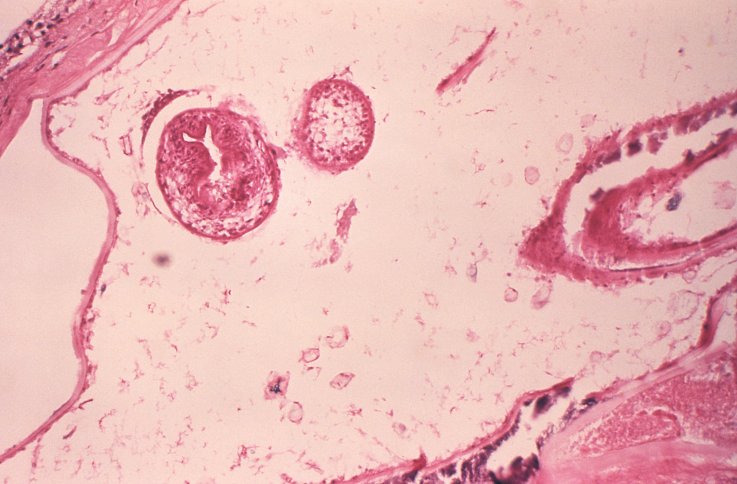Woman Had 65 Percent of Liver Removed to Treat 'Rare Cancer,' Only to Be Told Symptoms Were Being Caused by Parasite
READ MORE: More cases of deadly tapeworm that causes tumour-like growths appearing in Alberta
In November of 2019, the 36-year-old started having severe pain near her ribs and noticed she was losing weight. An MRI revealed a mass the size of a grapefruit in her liver. She was diagnosed with a rare, terminal liver cancer.
"I was basically getting ready to just die," said Armstrong. "It didn't look good. It was pretty sad and scary."
Surgeons removed 65 per cent of her liver, her entire gallbladder and some nodules from her lungs. Then a biopsy revealed the mass was actually a large cyst created by the tapeworm Echinococcus multilocularis.
Since 2013, Alberta has confirmed 15 cases of the parasite in patients; 13 were dog owners.
Magnetic resonance image of large, dark mass in Armstrong’s liver.
Cassidy Armstrong
Houston explains the parasite likely came from Europe and is becoming more common in Alberta coyotes. The tapeworm eggs are passed in the feces, which rodents eat. A dog can become infected by eating the feces or an infected rodent.
Human cases have also been confirmed in Saskatchewan, Ontario and Quebec.
"Coyotes are no longer wild creatures of the forest and the prairies. They are urban animals," said Houston.
He reminds everyone to wash their hands after touching a dog, and to clean fruits and vegetables that may come from a contaminated garden.
Dog owners are advised to de-worm their pets for tapeworms, not just roundworms.

READ MORE: Fox or coyote tapeworms acting like ‘aggressive tumours’ threaten dogs, humans: expert
Doctors believe Armstrong's parasite was growing inside her for about a decade.
She has no idea where she got it from, as she washes her hands and produce regularly and hasn't owned a dog since she was a kid.
Armstrong will stay on anti-parasitic medication in case any cells remain in her body. She hopes to prevent other patients from being misdiagnosed.
"(Doctors are) saying that I might have a chance at a normal life expectancy, which is great," Armstrong said with a smile. "I'm forever grateful."
Sources:
Global News
Newsweek
MSN








